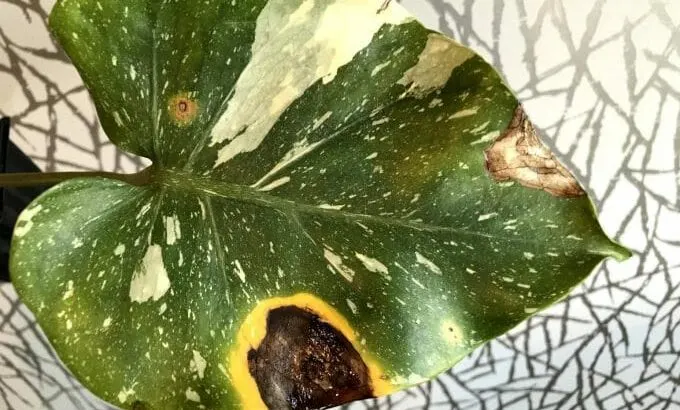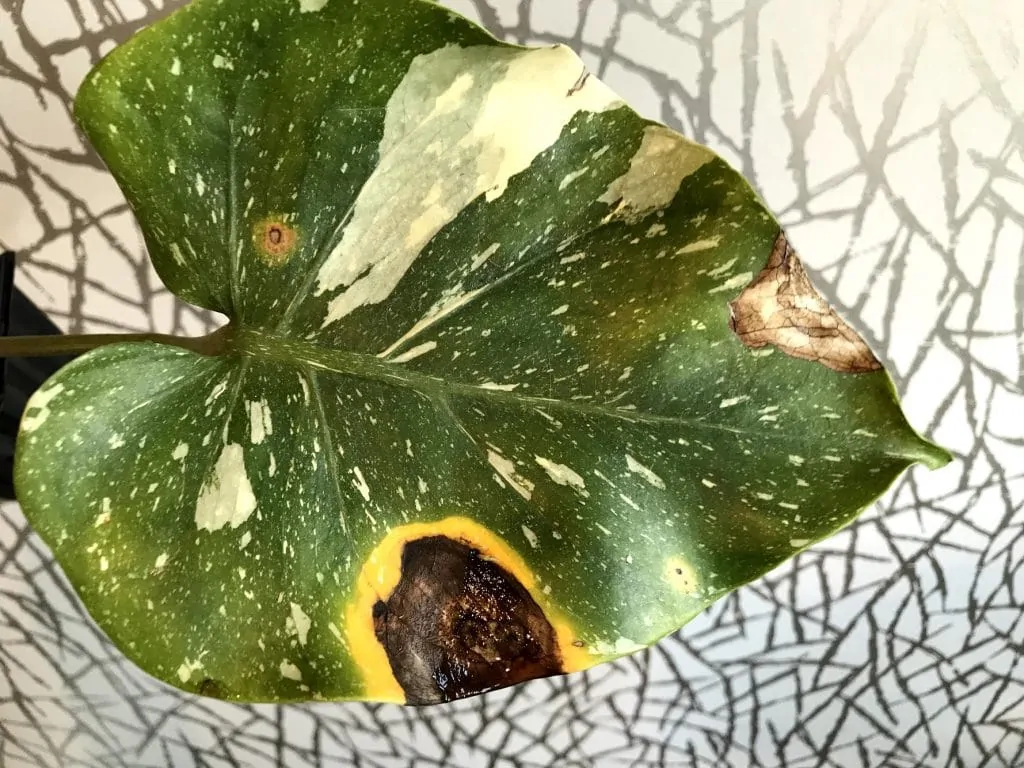What are the symptoms of root rot? How do you know if your plant’s roots are rotting? These are questions plant parents are asking themselves. As roots are mostly covered by soil, it is not always easy to detect if roots are rotting.
Table of Contents
Summary
| Category | Details |
|---|---|
| Symptoms | – Discolored leaves |
| – Discolored leaves | |
| – Wilted leaves and dying plants | |
| – Bad smell | |
| – Stunted growth | |
| Causes | – No drainage holes |
| – Dense soil | |
| – Incorrect watering | |
| – Insufficient lighting | |
| – Pot too big | |
| Diagnosis Tips | – Check roots for mushiness and color change |
| – Smell the soil for bad odor | |
| – Observe leaf color and condition | |
| Prevention | – Use well-draining soil |
| – Correct watering practices | |
| – Adequate lighting | |
| – Choose the right pot size | |
| Treatment | – Identify as early as possible |
| – Take adequate measures like repotting in well-draining soil and cutting off bad roots |
What is Root Rot?
Root rot is a disease that attacks the roots of a plant and is caused by either overwatering or fungus bacteria in the soil. It is seen in both indoor and outdoor plants.
However, it is more common in indoor houseplants, and symptoms are often shown when it is too late and roots start to rot. Roots then are often very firm and change color to black or white and become soft.
The roots decompose and often fall off when touched. A plant that has root rot will stop growing. Many sources describe root rot as lethal, which is true, but only if you are not taking action.
A plant with root rot can be brought back to life in most cases, but the most important step is to identify root rot as quickly as possible and then take adequate measures to save the plant.
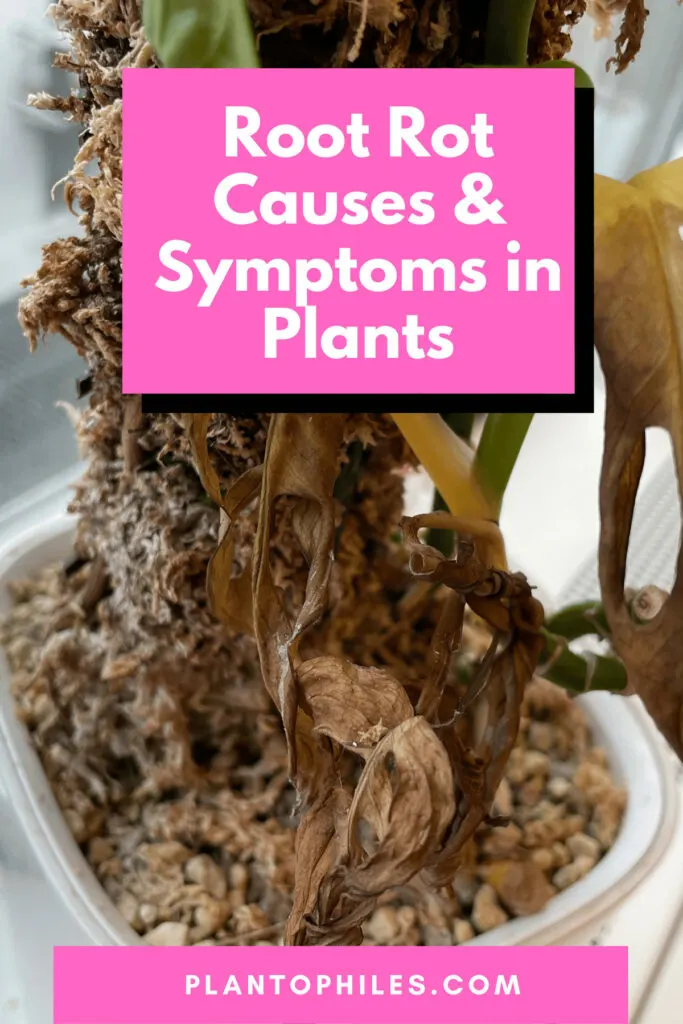
Root Rot Causes
1. No Drainage Holes
Bad drainage is one big cause of root rot in indoor houseplants. A common beginner mistake is using pots without drainage.
This is a big no-no unless you are sure you get the water right every time you water your plants.
2. Dense Soil
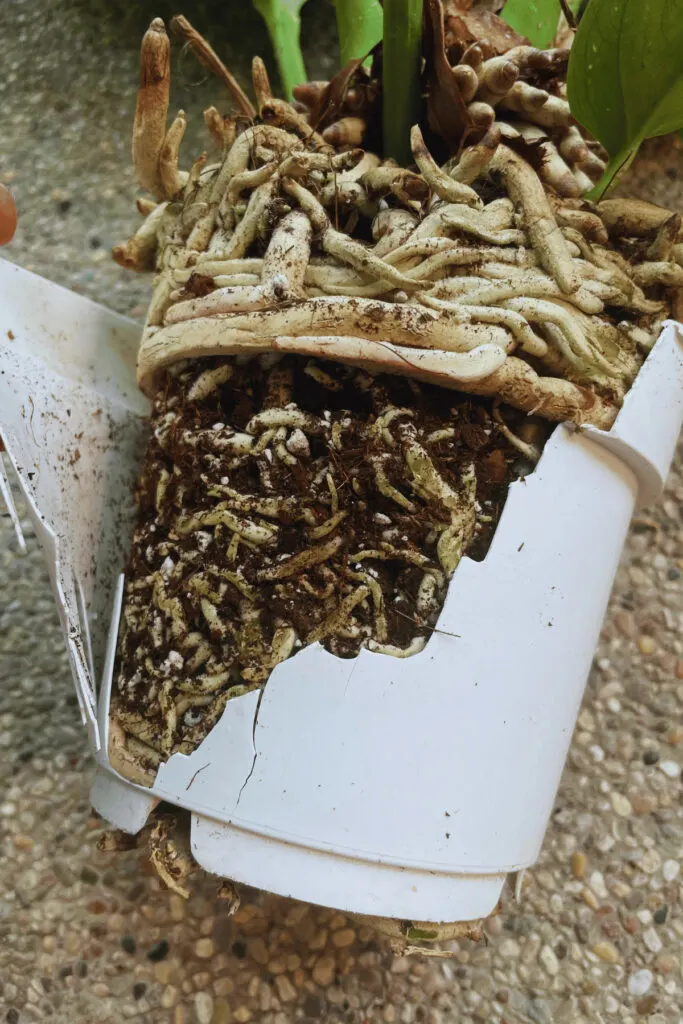
Dense soil prevents water from draining through the potting medium and potting holes. It soaks up with water and gets soggy. In addition, dense soil prevents airflow around the roots. Roots cannot get oxygen.
To make your soil well-draining, you need bigger grain-sized material.
It is common in Aroid cultivation to use orchid bark or big chunks of bark in general.
In addition, pumice and perlite help to break up soil and make it more “airy” and well-draining. A good indicator of well-draining is to count the seconds after watering your plants until you see water coming out of your pot.
While using well-draining material, you will see water flowing out of your pot almost immediately. Very dense soil, on the other hand, will keep water and soak like a sponge. The soil will get soaked.
Overwatering itself is a big cause of root rot. It is not always easy to know when your plant had enough. There is a natural tendency to mean it is too good and water your plant too much too often.
3. Incorrect Watering is a Root Rot Cause
A good indicator to see if your plant needs water is to stick your finger into the soil and see if the bottom 1/2 inch of your potting medium is wet to the touch. By wet, we mean wet and not soggy. If it is slightly wet no watering is needed. If it is dry, water your plant. This sounds simple, but you may need to develop a feeling for it.
4. Insufficient Lighting Leads to Root Rot
Not enough light can cause root rot as the plant cannot use the water provided as the photosynthesis is slowed down or stopped. Your plant will sit in water for too long, and it will cause root rot.
I once had a ZZ plant that was moved from a bright location to a dark bedroom. I kept the watering schedule the same, leading to the roots of the ZZ plant rotting. The plant needed much less water in the much darker spot where it was moved.
5. The Pot is too Big
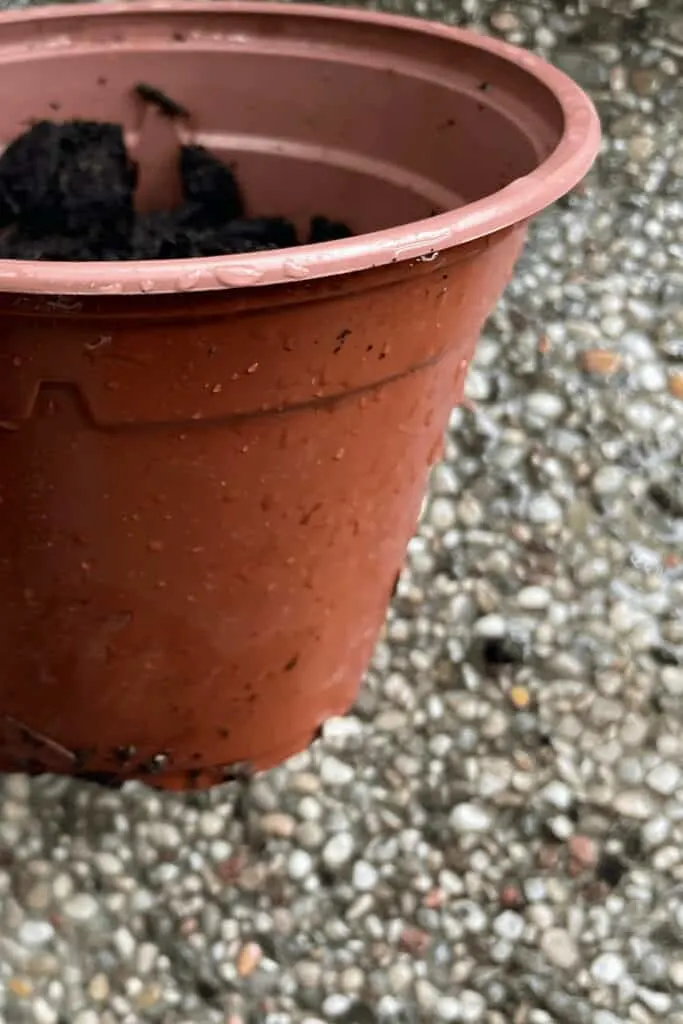
Too big a pot. I cannot stress the importance of choosing an adequate pot size. If the size of your pot is too big, it is extremely difficult to water your plant too much, and then you have to worry that root rot is developing. As your plant’s roots do not get to most areas in a way too big a pot, the water will accumulate and stay in these areas.
This can lead to an activation of fungus bacteria, or you can suffocate your plant’s roots because of too much water in the soil. It is, therefore, best to choose an adequate pot size for your plant and graduate 1-2 pot sizes each time your plant is about to outgrow the current pot.
Root rot Symptoms
- Discolored leaves
- Soft Mushy Roots
- Wilted Leaves and Dying Back Plants
- Bad Smell
- Stunted Growth
1. Discolored Leaves
Discolored and dull leaves indicate plant care issues. Leaves are a telltale for over- and underwatering, infections, other diseases, and nutrient deficiencies. Wilting and discolored leaves that become small can signal root rot.
Yellowing leaves can also indicate overwatering, while black spots with a yellow hue indicate a bacterial infection.
2. Soft Mushy Roots
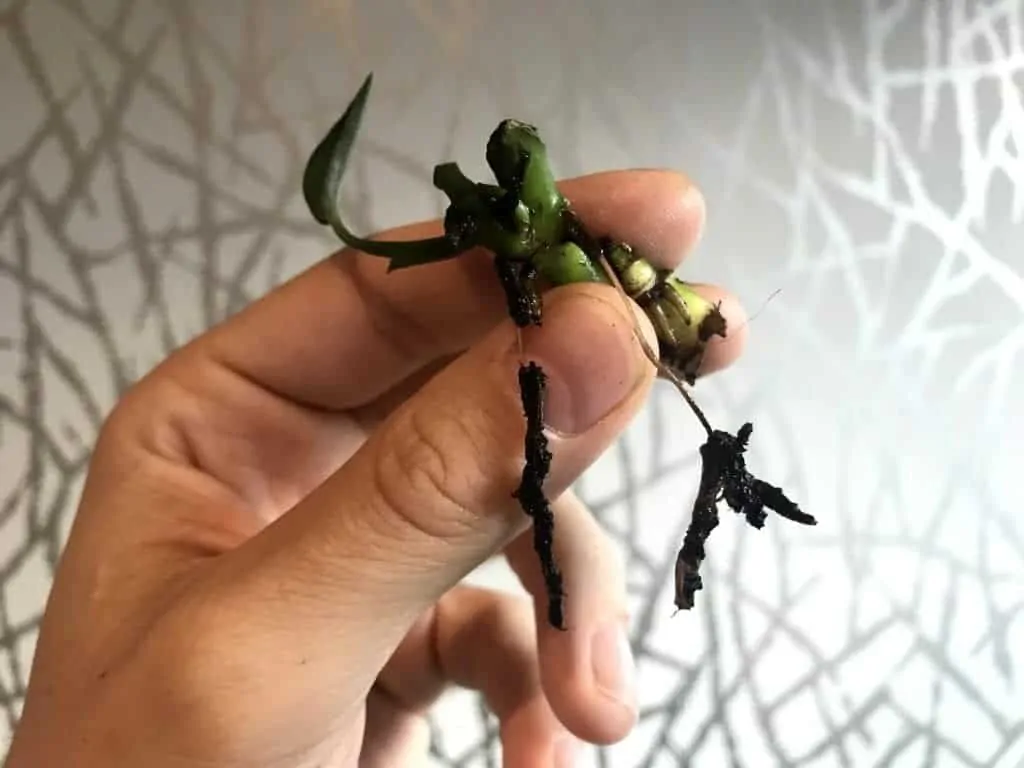
Roots infected with root rot become soft and mushy. These roots are very soft or fall off directly when you touch these roots. The bacteria destroy the plant tissue, which is why roots fall apart.
3. Wilted Leaves and Dying Back Plants
Wilted leaves are caused by insufficient nutrient and water intake caused by rot. As root rot travels up the plant, it can also reach the stems and foliage of plants. But mostly malnutrition and water intake problems caused by a diminished root system are to blame for wilting and dying leaves and plants.
4. Bad Smell
A bad smell is a good indicator that either the roots, stem, or leaves of your plant are rotting. You will often smell rotting roots when you take plants out of their pot and potting medium.
I can best describe the smell as woody and humid, like going into a forest during or after rainfall. When rot worsens, it develops a sour and much more unpleasant smell.
5. Stunted Growth
Stunted growth is caused by fewer and fewer roots supporting the plant. Plants rely on a healthy root system for water and nutrient intake. So you might be watering and fertilizing your plant, but it might still show signs of insufficient nutrients and even underwatering.
The reason is that roots can no longer intake water and nutrients once damaged.
Why Root Rot in Plants is Problematic
The biggest problem with root rot is that it spreads to other healthy roots and infects them. Once the roots of a plant are rotting, even correct watering and optimal soil humidity might not be enough to keep your houseplant alive. The downward spiral leading to death might have already started.
Therefore root rot needs to be treated fast.

A Fungal Infection Causes Root Rot
The fungus in the soil can lay dormant for multiple years and is activated by overwatering once or multiple times. The fungus then attacks the roots, starting from the tips. The roots decompose and decay; if you touch them with your hands, they will often fall off and feel soft.
The last Roots
Root rot is caused by too much water in the soil and dense conditions depriving roots of oxygen. Bear in mind that some symptoms also stand for other diseases or malnutrition. E.g., yellowing leaves can be a sign of over- or underwatering and do not necessarily mean that your plant is overwatered. Sticking your finger in the dirt will quickly help you rule out some causes.

Daniel has been a plant enthusiast for over 20 years. He owns hundreds of houseplants and prepares for the chili growing seasons yearly with great anticipation. His favorite plants are plant species in the Araceae family, such as Monstera, Philodendron, and Anthurium. He also loves gardening and is growing hot peppers, tomatoes, and many more vegetables.

